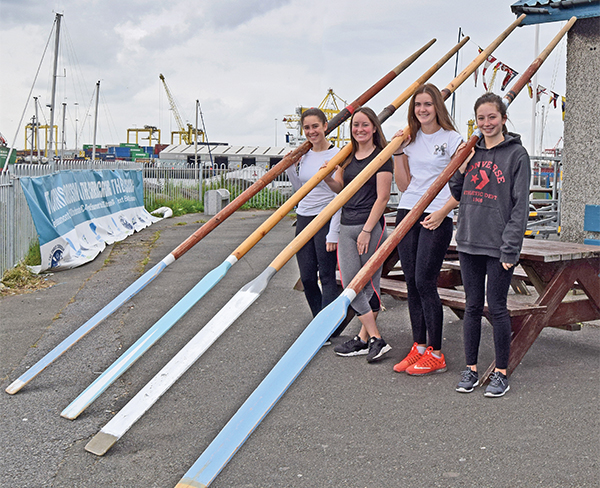This year’s Hope Row took place on Saturday, September 10th. Now in its fourth year, the event is hosted annually by Stella Maris Rowing Club to raise money for good causes. Beneficiaries this year are St Vincent’s Oncology Unit in the Mater Hospital and The Royal Hospital, Donnybrook.
It was great day on the river with bright sunshine and very little wind to impede the rowers as they fought to win in their respective categories. Thirty-nine crews from seven of the eastern seaboard clubs took part. Although this was a charity event, competition between the clubs was as fierce as ever as each crew battled to to pass the finish line ahead of their rivals.

The Hope Row differs from club regattas. It is not included in the competition for the East Coast Championships Shield, which was claimed once again this season by Stella Maris for the fourth year in succession. Well done Stella! The crews race over shorter and longer distances and they mix it up a bit when it comes to crews.
There was a huge element of fun involved. Paddy’s Richie Saunders and Stella’s Mick Curry joined forces to challenge the East Coast currach rowers. To see a Paddy’s man and a Stella man in a boat together is rare but they put aside their rivalries to raise funds for these two great Dublin institutions.
The big races at the event were the Men’s Long Race, which was won by the St Patrick’s Men’s Senior Crew, all descendants of the original Hobblers, and the Ladies and Mixed Long Races, which were both won by crews from St Michael’s Rowing Club, Dún Laoghaire who were the overall winners of The Hope Cup. These races were 13 kilometers, far longer than the distance typically raced in regattas, and taxed the crews to their limits.
One of the most exciting competitions of the day saw Stella Maris fathers Liam and Michael Bannable join their respective daughters, Olivia and Chloe, to compete in the Mixed Race, which they won by some distance.
Any report of the event would be incomplete without acknowledging the fantastic work of Sharon Bolger who took on the mammoth task of feeding the crews, and everybody else who happened by, with her delicious burgers and hotdogs. She played a blinder on the BBQ all day with a smile on her face and a word for everybody. Stella’s David Doyle was in charge of the faultless organisation, ably assisted by the club’s members.
Crews and supporters from all the clubs celebrated well into the night with live music and craic in The Poolbeg Yacht Club. They were joined by those who took part in The Hill & Back 7km run/walk/crawl of Irishtown Nature Park, which was part of the event.
The Hope Row marks the end of the rowing season for another year. Soon the skiffs will be cleaned and stored safely for the winter, the oars will be painted and hung on the walls of the clubhouses and the rowers will find gyms and football clubs to get their winter kicks until the season starts again next May.

